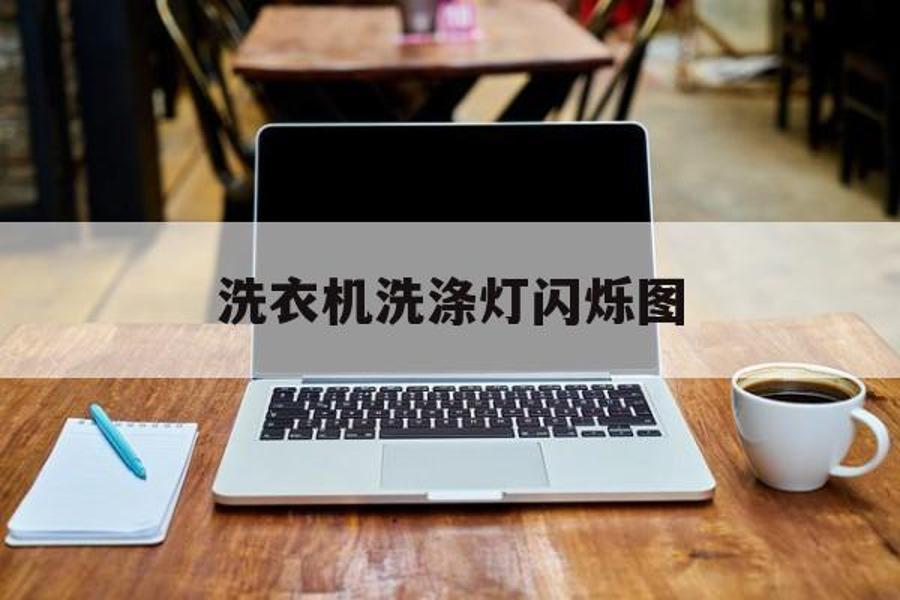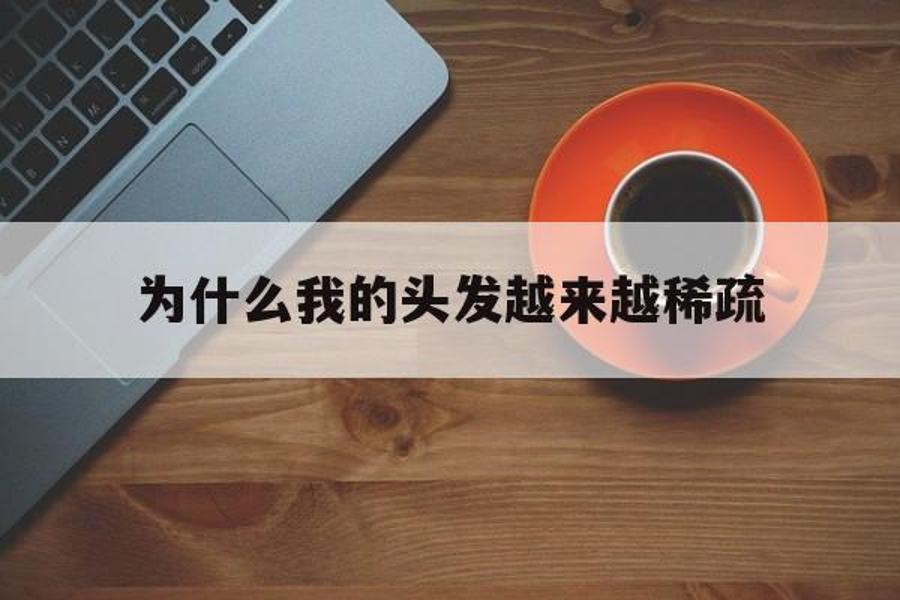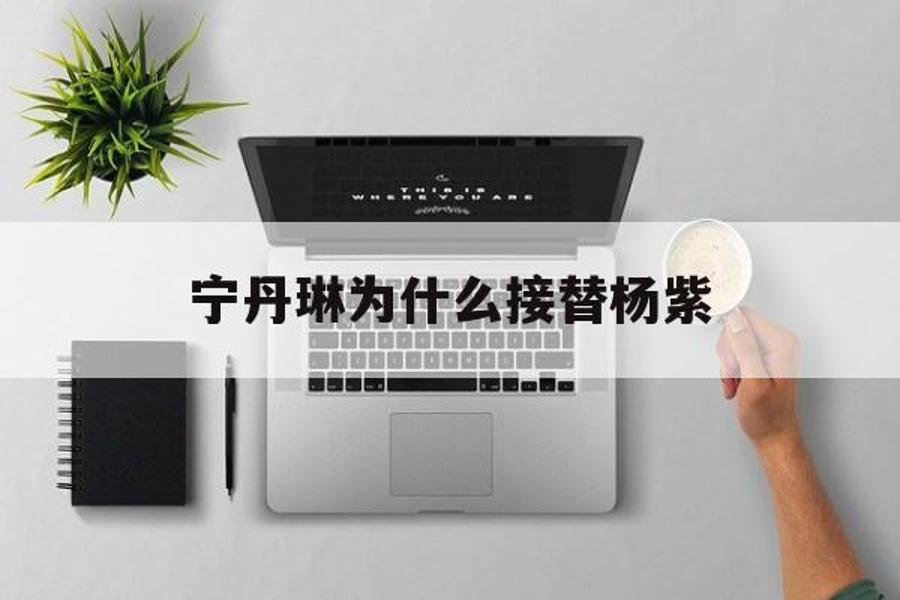1. 适合咖啡店的英文句子
1:There was a smell of coffee pervading the atmosphere. 空气里弥漫着咖啡的香味。
2:I’d like some coffee with a laced brandy. 我想喝一点加少量白兰地的咖啡。
3:I have coffee after dinner, as is my usual practice. 我饭后喝咖啡,这是我的习惯。
4:Here, have some coffee on me. 来,我请你喝咖啡关于咖啡的英文句子 16句关于咖啡的英文句子 16句。
5:He used to have a cup of coffee preparatory to his work. 在工作之前,他总要喝上一杯咖啡。
2. 有关咖啡的英语俗语
Flavor 【风味】
是香气、酸度、与醇度的整体印象,可以用来形容对比咖啡的整体感觉。
Acidity【酸度】
是所有生长在高原的咖啡所具有的酸辛、强烈的特质。此处所指的酸辛与苦味或发酸(sour)不同,也无关酸碱值,而是促使咖啡发挥提振心神、与涤清味觉等功能的一种清新、活泼的特质。
Body【醇度】
是调理完成的咖啡饮用后的,在舌头对咖啡留有的口感。醇度的变化可分为清淡如水到淡薄、中等、高等、脂状,甚至某些印尼的咖啡如糖浆般浓稠。
Aroma【气味】
Aroma是指调理完成后,咖啡所散发出来的气息与香味。Bouquet是比较不常用的字,专指研磨咖啡粉的味道。Aroma通常具有特异性,并且是综合性。用来形容气味(Aroma)的词包括:焦糖味、碳烤味、巧克力味、果香味、草味、麦芽味、浓郁、丰富、香辛等。
Bitter【苦味】
苦是一种基本味觉,感觉区分布在舌根部分。深色烘焙法的苦味是刻意营造出来的,但最常见的苦味发生原因,是咖啡粉用量过多,而水太少。苦味并不是发酸(sour)的同意字。
Bland【清淡】
生长在低地的咖啡,口感通常相当清淡、无味。咖啡粉份量不足、而水太多的咖啡,也会造成同样的清淡效果。
Briny【咸味】
咖啡冲泡后,若是加热过度,将会产生一种含盐的味道。有部分咖啡店的咖啡属于这种味道。
Earthy【泥土的芳香】
通常用来形容辛香而具有泥土气息的印尼咖啡。但这些所指的泥味并非指咖啡豆沾上泥土的味道。某些商业用咖啡会以廉价的咖啡混合,其中所含的泥味可能会变的脏脏的,这显然是因为将咖啡豆铺在地上进行干燥、粗操的加工技术所造成的。
Exotic【独特性】
形容咖啡具有独树一格的芳香与特殊气息,如花卉、水果、香料般的甜美特质。东非与印尼所产的咖啡,通常具有这种特性。
Mellow【芳醇】
是对低至中酸度、平衡性佳的咖啡所形容的形容词。
Mild【温和】
表示某种咖啡具有调和、细致的风味。生长于高原的拉丁美洲高级咖啡,通常被形容为质地温和。此外、它也是一种咖啡界的术语,用来指所有除了巴西生产的高原咖啡。
Soft【柔润】
形容如印尼咖啡般的低酸度咖啡;亦可以形容为芳醇或香甜。
Sour【发酸】
一种感觉区主要位于舌头后侧的味觉,是浅色烘焙咖啡的特点。
Spicy【香辛】
指一种令人联想到某种特定香料的风味或气味。某种印尼所产的高原咖啡(尤其是陈年咖啡),蕴含小豆蔻般香甜的气味。
Strong【浓烈】
就技术上而言,形容的是各种味觉优缺点的多寡,或指特定的调理成品中,咖啡与水的相对比例。就通俗的用法而言,浓烈形容的是深色烘焙咖啡强烈的风味。此外,它也误导人们产生含有大量咖啡因的错觉。事实上,咖啡因含量高的是罐装的清淡咖啡,因为其中含有较多的低因咖啡。
Sweet【香甜】
是一种普遍使用的形容词,本质上几乎像是水果味,与酒味也有关。生长于哥斯达黎加高原的咖啡通常具有辛烈的风味。
Wild【狂野】
形容咖啡具有极端的口味特性。一般人若是无法接受的话,会称之为古怪,但也可能是吸引的特色,看个人喜好了。
Winy【葡萄酒味】
形容一种令人联想到葡萄酒般的迷人风味。水果般的酸度与滑润的醇度,所营造出来的对比特殊风味。肯亚咖啡便是含有葡萄酒风味的最佳典范。
3. 关于咖啡的英文版介绍
起源 Coffee is a brewed beverage prepared from roasted seeds, commonly called coffee beans, of the coffee plant. They are seeds of “coffee cherries” that grow on trees in over 70 countries. It has been said that green coffee is the second most traded commodity in the world behind crude oil.Due to its caffeine content, coffee can have a stimulating effect in humans. Today, coffee is one of the most popular beverages worldwide.It is thought that the energizing effect of the coffee bean plant was first recognized in the south west of Ethiopia, and the cultivation of coffee expanded in the Arab world.The earliest credible evidence of coffee drinking appears in the middle of the fifteenth century, in the Sufi monasteries of the Yemen in southern Arabia. From the Muslim world, coffee spread to Italy, then to the rest of Europe, to Indonesia, and to the Americas.Coffee berries, which contain the coffee bean, are produced by several species of small evergreen bush of the genus Coffea. The two most commonly grown species are Coffea canephora (also known as Coffea robusta) and Coffea arabica; less popular species are liberica, excelsa, stenophylla, mauritiana, racemosa. These are cultivated primarily in Latin America, Southeast Asia, and Africa. Once ripe, coffee berries are picked, processed, and dried. The seeds are then roasted, undergoing several physical and chemical changes. They are roasted to varying degrees, depending on the desired flavour. They are then ground and brewed to create coffee. Coffee can be prepared and presented in a variety of ways.Coffee has played an important role in many societies throughout history. In Africa and Yemen, it was used in religious ceremonies. As a result, the Ethiopian Church banned its secular consumption until the reign of Emperor Menelik II of Ethiopia.It was banned in Ottoman Turkey in the 17th century for political reasons,and was associated with rebellious political activities in Europe.Coffee is an important export commodity. In 2004, coffee was the top agricultural export for 12 countries, and in 2005, it was the world’s seventh-largest legal agricultural export by value.Some controversy is associated with coffee cultivation and its impact on the environment. Many studies have examined the relationship between coffee consumption and certain medical conditions; whether the overall effects of coffee are positive or negative is still disputed.The term coffee was introduced to Europe by the Ottoman Turkish kahve, which is, in turn, derived from the Arabic: قهوة, qahweh.The origin of the Arabic term is derived either from the name of the Kaffa region in western Ethiopia, where coffee was cultivated, or by a truncation of qahwat al-būnn, meaning “wine of the bean” in Arabic. The English word coffee first came to be used in the early to mid-1600s, but early forms of the word date to the last decade of the 1500s. In Ethiopia’s neighbor Eritrea, “būnn” (also meaning “wine of the bean” in Tigrinya) is used. The Amharic and Afan Oromo name for coffee is bunna.品种 Americano: A single shot of espresso with about 7 ounces of hot water added to the mix. The name for this coffee drink stemmed from an insult to ‘uncouth’ Americans who weren’t up to drinking full espressos.A Shot in the Dark: See ‘Hammerhead’.Black coffee: A drip brew, percolated or French press style coffee served straight, with no milk.Cafe au Lait: Similar to Caffe Latte, except that an au lait is made with brewed coffee instead of espresso. Additionally, the ratio of milk to coffee is 1:1, making for a much less intense taste.Cafe Breva: A cappuccino made with half and half milk, instead of whole milk. The theory is that the mix gives a richer, creamier flavor. You should be aware, before trying this for yourself, that half and half is much harder to foam.Caffe Latte: Essentially, a single shot of espresso in steamed (not frothed) milk. The ratio of milk to coffee should be about 3:1, but you should be aware that latte in Italian means ‘milk’, so be careful ordering one when in Rome.Cafe Macchiato: A shot of espresso with steamed milk added. The ratio of coffee to milk is approximately 4:1.Cappuccino: Usually equal parts espresso, steamed milk, and frothed milk, often with cinnamon or flaked chocolate sprinkled on top. Some coffee shops will add more milk than that so that the customer will get a bigger drink out of the deal, but that makes the coffee itself far weaker. Click here for how to make Cappuccino Double, or Double Shot: Just as it sounds, this is two shots of espresso mixed in with the regular amount of additional ingredients. So, for example, if 。
4. 关于咖啡的英语作文(只给一些段落,句子也行)做好是全篇的
你可以在谷歌直接搜索,关键词:coffee promotion 你会看到一些网页,自己借鉴一下。
我找了一篇台湾星巴克的促销文章。 如果你们店只是卖咖啡,就请特别注意看e5a48de588b67a6431333330353561一下最后两段,这篇文章写的还是不错的。
Here is some good news for people who like to hang out in Starbucks. The Starbucks “Cafe & Dining” store near MRT Neihu Station in Taipei officially opened last Monday. It is the first ever Starbucks store in the nation to put main courses on its menu. Starbucks has begun to serve homemade breakfasts, lunches, and dinners with some experimental culinary concepts to fill up the hungry stomachs of customers.The store manager Sasha Yang told the Taipei Times last Saturday that the new menu is designed to preserve the natural, original flavors of the ingredients. Since opening, the store has attracted a steady stream of customers, most of whom have given positive feedback to the new meals. Unfortunately, everything on the menu at the moment contains meat, so some customers have suggested that the store should follow the recent popularity in healthy vegetarian food and provide a vegetarian-friendly menu. The store will continue to gather customers’ opinions and create recipes that cater to a Taiwanese palate, said Yang.Following the introduction of “Cafe & Dining” stores in Hong Kong and Singapore, Taiwan has become the third Asian nation with one. The store serves a menu of five new dishes during lunch hours (from 11am to 2pm) and dinner hours (from 5pm to 8pm). These include “chicken salad with pesto sauce,” “Tuscan tomato and vegetable soup,” and “French potato and bacon quiche,” with two entrees of “penne rigate with Sicilian meat sauce” and “bacon lasagna with basil pesto sauce.” In addition, the store offers freshly baked “rye and mixed grain bread” during breakfast hours before 11am and a dessert, “creme brulee,” all day long. Everything can be ordered a la carte or as an entree, and the prices range from NT$50 to NT$370.As part of the store’s sales promotion, people can get a free tall-size coffee with a set meal during the lunch and dinner hours prior to the 15th of this month, so that gives you four more days. There will be other promotions starting from next week. Although the new menu only serves a few selections and is based on Italian cuisine, people have been generally satisfied. As the store manager was speaking, the line of customers waiting to place their orders at the counter was stretching nearly to the door. The store’s popularity is a testament to the fact that customers are embracing Starbucks’ new food concept.Set in a contemporary art style decor, the laid-back two-story “Cafe & Dining” store is separated into as many as 10 different unique seating areas with tables that can fit anywhere from one person to 12 people. Its wooden interior design creates a warm and cozy dining atmosphere. Now, eating steaming-hot main course meals at Starbucks is no longer a dream.。
5. 咖啡的英文介绍
MOCHA:A Café mocha is a variant of a cafe latte. Like a latte it is typically one third espresso and two thirds steamed milk, but a portion of chocolate is added, typically in the form of sweet cocoa powder, although many varieties use chocolate syrup. Mochas can contain dark or milk chocolate.Unlike cappuccino, cafe mochas do not contain the well-known milk froth on top. They usually have whipped cream and a dusting of either cinnamon or cocoa powder. Marshmallows may also be added on top for flavor and decoration.A variant is white café mocha, made with white chocolate instead of milk or dark. There are also variants of the drink that mix the two syrups; these are sometimes referred to as “Zebras”, also, more comically referred to as “Tuxedo Mocha”.A term moccaccino is used in some regions of Europe and the Middle East to describe Café Latte with cocoa or chocolate. In the U.S. it usually refers to a cappuccino made with chocolate.Café mocha takes its name from the Red Sea coastal town of Mocha, Yemen, which as far back as the fifteenth century was a dominant exporter of coffee, especially to areas around the Arabian Peninsula. Mocha, Yemen also grew Arabica Mocha coffee beans which have a milk chocolate flavor. Mocha coffee beans belong to the Coffea arabica plant.Mocha is also a type of ‘chocolatey’ coffee bean (from Ethiopia but originally imported through Mocha in Yemen), whence may come the association with chocolate and the development of the chocolate-espresso drink. In Europe ‘mocha coffee’ can refer either to this drink or simply to coffee brewed with mocha beans.CAPPUCCINO:Cappuccino is an italian drink prepared with espresso, hot milk, and steamed-milk foam. A cappuccino differs from a caffè latte in that it is prepared with much less steamed or textured milk than the caffè latte, with the total of espresso and milk/foam making up between approximately 150 ml and 180 ml (5 and 6 fluid ounces). A cappuccino is traditionally served in a porcelain cup, which has far better heat-retention characteristics than glass or paper. The foam on top of the cappuccino acts as an insulator and helps retain the heat of the liquid, allowing it to stay hotter longer.LATTE: A latte (from the Italian caffè latte, meaning “coffee with milk”) is a type of coffee drink made with hot milk.In Italian, latte is simply the word for milk. What in English-speaking countries is now called a latte is shorthand for “caffelatte” or “caffellatte” The long Italian form literally means “coffee and milk”, similar to the French café au lait, the Spanish café con leche and the Portuguese café com leite. Caffelatte is today part of the defined international coffee menu, which also includes cappuccino and espresso.。
6. 关于咖啡的英文版介绍
Coffee is a brewed beverage prepared from roasted seeds, commonly called coffee beans, of the coffee plant. They are seeds of “coffee cherries” that grow on trees in over 70 countries. It has been said that green coffee is the second most traded commodity in the world behind crude oil.[1] Due to its caffeine content, coffee can have a stimulating effect in humans. Today, coffee is one of the most popular beverages worldwide.[2]It is thought that the energizing effect of the coffee bean plant was first recognized in the south west of Ethiopia, and the cultivation of coffee expanded in the Arab world.[3] The earliest credible evidence of coffee drinking appears in the middle of the fifteenth century, in the Sufi monasteries of the Yemen in southern Arabia.[3] From the Muslim world, coffee spread to Italy, then to the rest of Europe, to Indonesia, and to the Americas.[4]Coffee berries, which contain the coffee bean, are produced by several species of small evergreen bush of the genus Coffea. The two most commonly grown species are Coffea canephora (also known as Coffea robusta) and Coffea arabica; less popular species are liberica, excelsa, stenophylla, mauritiana, racemosa. These are cultivated primarily in Latin America, Southeast Asia, and Africa. Once ripe, coffee berries are picked, processed, and dried. The seeds are then roasted, undergoing several physical and chemical changes. They are roasted to varying degrees, depending on the desired flavour. They are then ground and brewed to create coffee. Coffee can be prepared and presented in a variety of ways.Coffee has played an important role in many societies throughout history. In Africa and Yemen, it was used in religious ceremonies. As a result, the Ethiopian Church banned its secular consumption until the reign of Emperor Menelik II of Ethiopia.[5] It was banned in Ottoman Turkey in the 17th century for political reasons,[6] and was associated with rebellious political activities in Europe.Coffee is an important export commodity. In 2004, coffee was the top agricultural export for 12 countries,[7] and in 2005, it was the world’s seventh-largest legal agricultural export by value.[8]Some controversy is associated with coffee cultivation and its impact on the environment. Many studies have examined the relationship between coffee consumption and certain medical conditions; whether the overall effects of coffee are positive or negative is still disputedThe history of coffee has been recorded as far back as the ninth century.[1] At first, coffee remained largely confined to Ethiopia, where its native beans were first cultivated by Ethiopian highlanders. However, the Arab world began expanding its trade horizons, and the beans moved into Yemen, where until ca 1700 the major emporium was Mocha, and thence to North Africa and were mass-cultivated. From there, the beans entered the Indian and European markets, and the popularity of the beverage spread.。
7. 关于咖啡馆的英文介绍
Caffè Mocha 摩卡 Caramel Macchiato 焦糖玛奇朵 Caffè Americano 美式 Caffè Latte 拿铁 Cappuccino 卡布奇诺 espresso 特浓咖啡 Caramel Coffee Jelly 焦糖吉利 Vanilla Frappuccino香草星冰乐 coffee Frappuccino咖啡星冰乐 mocha Frappuccino 摩卡星冰乐 Frappuccino® Blended Tea 芒果茶星冰乐 Decaf 脱因咖啡 non-fat 脱脂牛奶【学名】用作商品咖啡的4种:大果咖啡 Coffea liberica中果咖啡 Coffea canephora小果咖啡 Coffea arabica高产咖啡 Coffea dewevreiCoffea是 咖啡树【英文】coffee【别名】小粒种又称阿拉伯种,中粒种又称甘弗拉种,大粒种又称利比里亚种常见的主要有2种:Arabica 和Robusta。
在国外,咖啡更是日常生活不可缺少的饮料,咖啡店随处可见,从店内飘出的咖啡香总不禁令人放慢脚步,贪婪的多吸两口。 现在的你正漫步在异国的街道,路旁的咖啡馆使你想享受悠闲的时刻,咖啡因的香味唤起你的浪漫情怀,进去啜饮一杯咖啡吧!(等一下!)心里有个微弱的声音让你却步。
真糟糕,老师教的英文,全部留在学校,当你转身要走,那一堆帅气侍者(waiter)和美丽的侍女(waitress)又在那对你频频微笑。 首先,我们先得要开门进去,(废话!)But,先弄清楚门上标示的英文”Push”,是 推;而”Pull”是拉。
(什麽?太简单了,我早说你们聪明了。) 看吧!A piece of cake.(轻而易举)已经带你到咖啡店,剩下看你罗! 当你到咖啡店时,侍者总会亲切地先问候你 问候语: 你可以回答: “Hi!” “How are you?” “How’s everything?” “How are you doing?” “Good morning( afternoon; evening).” “Fine. Thank you.” “Great. Thank you.” “Very well. Thanks.” “Fine, thank you, and you?” 应用初中所学的英文就可以轻松对答了,要记得保持微笑(Keep smiling)和礼貌(Be polite) 接着,侍者会问你有几位要用餐? 只须用简单的英文数字即可。
“For how many people?” “A table for one; two; three。
..” 国外多是需要带位,可别先冲进去,丢个大包包占位!有些店还会问 “Smoke or non-smoke?”吸烟区或非吸烟区。
至今你都表现的不错,当你舒服坐在椅子上,waiter (waitress)也给你一份菜单(menu),翻开它,成堆的英文只看得懂”coffee”,算了,闭起眼睛随便点一个好了!(别这麽自暴自弃)其实只要说”coffee”,你就可以喝到咖啡水(原谅我如此形容,不过味道真的淡如水。) 介绍一般常见的咖啡种类: A.一般咖啡 : 单品(single estate)+综合(blend) single estate: blend: Hawaiian Kona 夏威夷科那 Colombian 哥伦比亚 Mocha 摩卡 Brazilian 巴西 Mendeling 曼特宁 Kenya AA 肯亚特极 Java 爪哇 Kilimonjaro 吉利马扎罗 Blue Mountain 蓝山 有各种不同口味,视店家作本日咖啡 everyday blend B.花式咖啡 : 加入各种口味的糖浆(syrup);鲜奶油(whipped cream)少许酒 Irish coffee 爱尔兰咖啡 Vienna coffee 维也纳咖啡 Ice Coffee也算花式咖啡一种,但在国外较少见° Frapuccino 法布奇诺 Caffé Frio 冰沙咖啡 C.意式咖啡 (Italian coffee) : 加入蒸牛奶(steamed milk) Caffé Latte 拿铁(奶量较多) Cappuccino 卡布其诺 Mochaccino 摩卡其诺(加巧克力酱) 基本作底 Espresso 分为单份浓度(Single)和双份浓度(Double) D.Decaf低咖啡因咖啡 : 嗯~~,选好咖啡之后,眼角瞄到玻璃柜中那些精致的糕饼,看起来真美味!(Look so delicious!)把Menu翻到甜点(Dessert)那页,节食(on a diet)?唉!回去再说吧! 蛋糕类(Cake) 巧克力口味 比斯考提(Biscotti) 松糕类(Muffin) Cheese Cake 起士蛋糕 ~~~ 咖啡店经典蛋糕 Sponge Cake 海绵蛋糕 Chiffon Cake 戚风蛋糕 Vanilla Cream Cake 香草奶油蛋糕 Marbled Chocolate Cheese Cake 大理石蛋糕 Chocolate Cake 巧克力蛋糕 Black Forest Cake 黑森林蛋糕 Swiss Chocolate 瑞士巧克力蛋糕 White Chocolate Cake 白巧克力蛋糕 为一种长型的硬脆饼,用来沾咖啡别有一般风味,带有浓浓的奶油味° Butter 奶油 Chocolate 巧克力 Hawaii Nut 夏威夷坚果口味 有很多口味: Banana 香蕉 Lemon 柠檬 Vanilla 香草 Strawberry 草莓 Chocolate 巧克力 Blueberry 蓝莓 Cranberry 蔓越莓Raspberry 覆盆莓 甜甜圈(Doughnut) 派类(Pie) 格子松饼(Waffle) 英式酥饼(Scone) Plain Doughnut 原味甜甜圈 Jelly Doughnut 果酱甜甜圈 Chocolate Doughnut 巧克力甜甜圈 Powdered Sugar Doughnut 糖粉甜甜圈 Apple Pie 苹果派 Lemon Pie 柠檬派 Pecan Pie 核桃派 Cherry Pie 樱桃派 Boston Pie 波士顿派 Butter 奶油 Chocolate 巧克力 Cinnamon 肉桂 Pancake 这是一种薄薄一片的煎饼,一份叁至四片,沾糖浆或奶油° 呈叁角型,烤后热热酥酥的很好吃! Butter 奶油 Chocolate 巧克力 Cranberry 蔓越莓 卷类(Roll) 塔类(Tart) 贝果(Bagel) 其他 Miniature Danish Roll 丹麦卷 Raisin Roll 葡萄乾卷 Maple Cinnamon Roll 枫糖肉桂卷 Caramel 焦糖卷 Fruit Tart 水果塔 Strawberry Tart 草莓塔 Lemon Tart 柠檬塔 国外常吃的圆形面包,切开涂抹酱料° Plain 原味 Herb 药草 Garlic 大蒜 。
8. 与咖啡有关的英语词汇有哪些
体验式英语教育先锋美联英语
与咖啡馆有关英语单词和短语
1,Hot/Cold Coffee,咖啡馆泡吧,一定要熟知这个单词coffee.但是咖啡馆的服务员一定会问你要hot或者cold.通常来说,cold要比hot贵一点。在国外的咖啡馆一般没有中文的“常温”这种说法,如果你要表达的话可以说 “room-temperature coffee”。如果你的英文是在太差,那就简单地说 “ not too cold and not too hot”对方就明白你的需求了。如果你要和热的卡布奇诺,你可以说 “Hot Cappuccino”;如果你要冷的摩卡,你就说 “Cold Mocha”。
2,Sugar糖。Brown sugar黄糖;White sugar白糖;Milk牛奶。喝咖啡觉得牛奶不够,你可以说 “Can I get more milk, please?”
3,Cheese Cake芝士蛋糕。Cheese 芝士,cake蛋糕。在咖啡馆喝东西,经常会有各种蛋糕作为甜点。常见的还有Brownie就是布朗尼,即巧克力蛋糕。还有Tiramisu,即提拉米苏。
4,WIFI Password无限网络密码。旅行途中,观光途中,经常在咖啡馆里休息一下,这个时候急需无限网络来打发这泡吧时光。所以你可以直接问服务员 “What’s your WIFI Password?”
5,Work.这个词大家都知道是工作的意思。但是经常有一个表达叫做not working,即不起作用的意思。所以当咖啡馆的WIFI用不了的时候,你可以对服务员说 “ The WIFI here is not working. Can you check please?” check就是检查的意思。
6,Power Extension电源延长线,接线板的意思。Power是电源的意思,Extension是延长的意思。若果在使用电源的时候发现电源线不够长,你可以问服务员 “Do you have a power extension?”你有电源延长线或者接线板吗?
7,Plug in电源插头或者把插头插进插座的动作。走进咖啡馆,打开电脑,手里拿着插头想找插座,但又不知道插座在哪里?这个时候你可以问服务员说 “Is there a place that I can plug this in?”哪里有插座,我可以把我的插头插进去。这里的this指的是你手头拿的插头。
8,Adapter转换器。在国外旅行,特别是一些英联邦国家,是英式插座,所以我们要准备转换器。你可以去超市购买 “I’d like to buy an adapter.” 也可以去借 “Can I borrow an adapter?”
9,Smoke,吸烟的意思。如果你想吸烟,一定要提前向服务员确认 “Can I smoke here?”我能在这里吸烟吗?如果不能他会告诉你No.如果室内不可以,室外可以的话,他会说 “You can smoke outside.” Outside就是室外的意思。如果可以抽烟,但是没有烟灰缸,这个时候,你可以向服务员询问 “ Can I get an ash tray, please?”Ash tray就是烟灰缸的意思。








